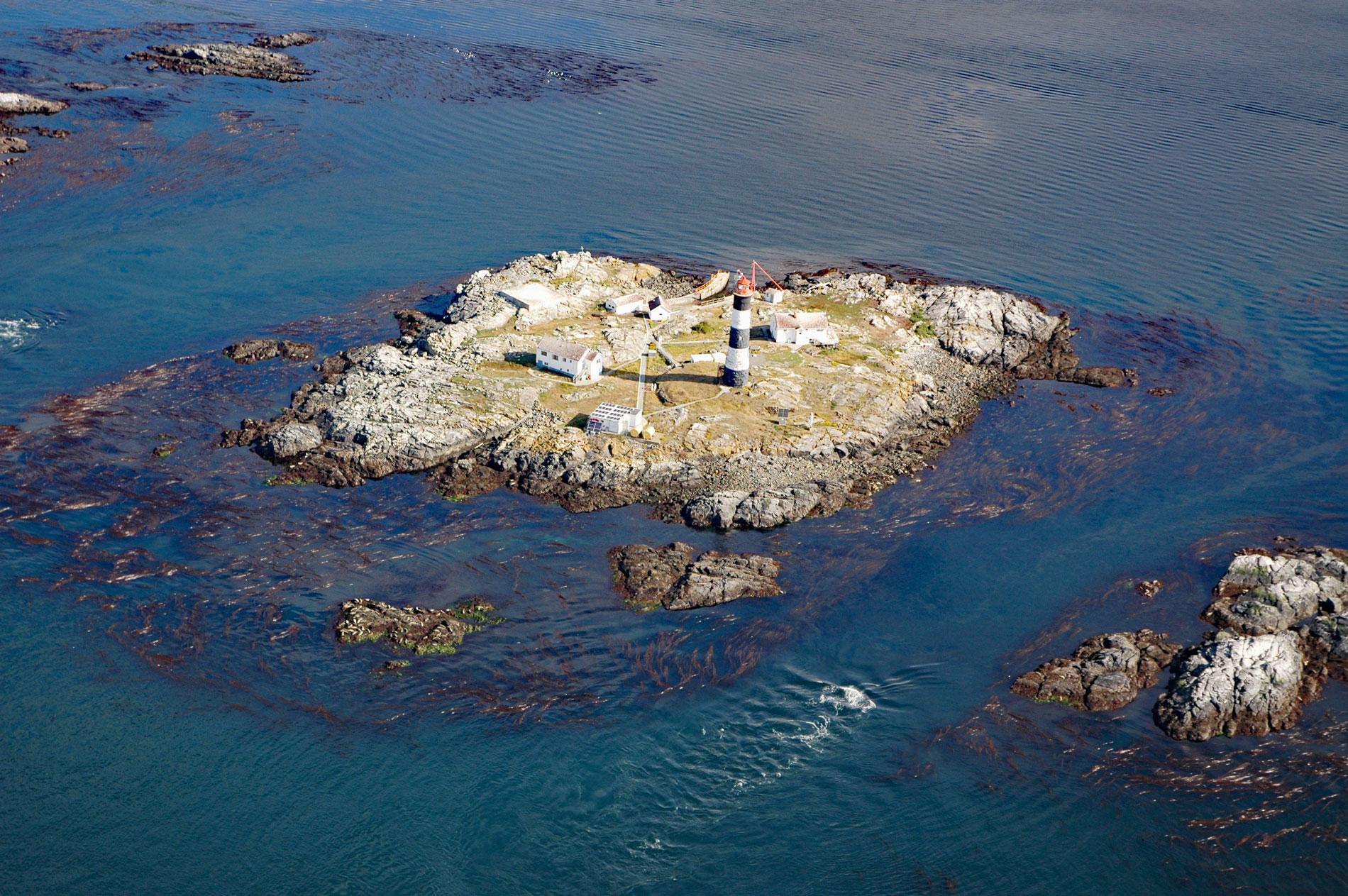Race Rocks is a group of nine islets including North Rock, West Race, Great Race, and Rosedale Rock located about 1 mile (1.6 km) off Cape Calver on the southern tip of Vancouver Island in the Strait of Juan de Fuca, about 12 miles (19 km) southwest of Victoria and 11 miles (18 km) southeast of Sooke, British Columbia. Race Rocks were named in 1846 by Captain Henry Kellett on the HMS Herald for the fast-flowing tidal races that develop large waves and eddies. Race Rocks and the north shore of the strait consists of a series of metamorphosed sediments and igneous rocks overlain by a thick sequence of Eocene submarine volcanic flows of the Metchosin Igneous Complex. The Metchosin formation forms most of the south tip of Vancouver Island south of Leech River Fault and consists of three rock units including a basaltic sequence, a sheeted dike complex, and gabbro plutons. In the Strait of Juan de Fuca, these extrusives are overlain by nearshore marine sediments of Oligocene and Pliocene age. During the Pleistocene, the eastern strait was occupied at least four times by lobes of continental ice, the last being the Vashon Stade glaciation that lasted from 19,000 to 16,000 years ago when ice advanced westward and southward as the Juan de Fuca and Puget lobes, respectively.
Because of the unusually strong currents, this area is notoriously difficult and dangerous to navigate. Great Race Island is the site of a historic lighthouse built by the crew of HMS Topaze. It is the only lighthouse on the British Columbia coast built of rock and painted with distinctive black and white bands. Race Rock Light was designed to function with Fisgard Light and construction of both was undertaken in 1859, at the initiative of colonial officials and with partial financial and technical support of the Imperial Government. The latter provided expertise, and the lantern and lighting apparatus, a second-order Fresnel lens, arrived from England aboard the Grecian in August and were installed that fall atop the completed tower. The original light had a signature of one white flash every ten seconds and was exhibited at a focal plane of 118 feet (36 m). The colonial government oversaw the selection of the site and the construction following a plan of combined tower and dwelling. Race Rocks light tower is British Columbia’s second oldest operating lighthouse and a forerunner of the extensive system of navigational aids built during the following century along Canada’s west coast. In 1997, the Canadian Coast Guard automated the station. In 2009, scaffolding was placed around the lighthouse, and it was restored and painted during most of that year. Students participating in marine biology courses at nearby Pearson College frequently visit Race Rocks and were instrumental in having the area designated Race Rocks Ecological Reserve.
In 1980, the province of British Columbia, under the authority of the provincial Ecological Reserves Act established the Race Rocks Ecological Reserve. This provided protection of the natural and cultural heritage on 768 acres (311 ha) including the nine islets and of the ocean seabed to 20 fathoms (36.6 m) but does not include the land leased by the Canadian Coast Guard with the foghorn and lighthouse. Ocean dumping, dredging and the extraction of non-renewable resources are not permitted within the boundaries of the reserve. In recent decades, Race Rocks has become an important haulout for northern elephant seals, the largest species of pinniped in the northern hemisphere. The northern elephant seal lives in the eastern Pacific Ocean and spends most of their time at sea, and usually only comes to land to give birth, breed, and molt. These activities occur at rookeries that are located on offshore islands or remote mainland beaches, mostly off the coast of California and northern Baja California, Mexico. In the 19th century, elephant seals were hunted relentlessly for their oil and were thought to be extinct until an 1892 Smithsonian Institution expedition found eight individuals on Mexico’s remote Guadalupe Island. Under federal protection, elephant seals have recovered dramatically, from a few survivors to a population of about 200,000. Their breeding range has also expanded from Mexico to California’s Channel Islands and into the Pacific Northwest as far north as southern British Columbia. In 2009, the first elephant seal births were recorded at Race Rocks. Read more here and here. Live webcams are available here. Explore more of Race Rocks and the Strait of Juan de Fuca here:

